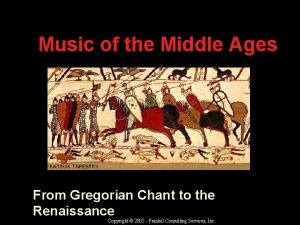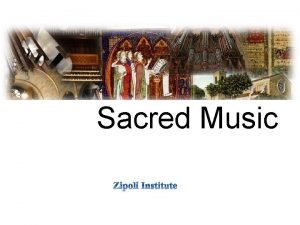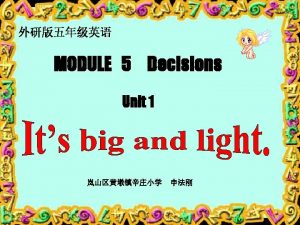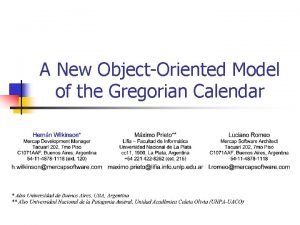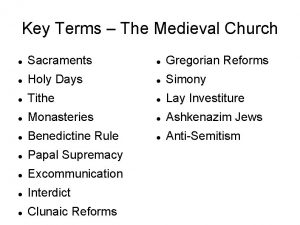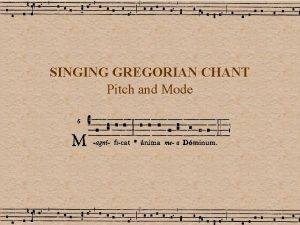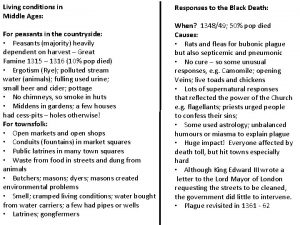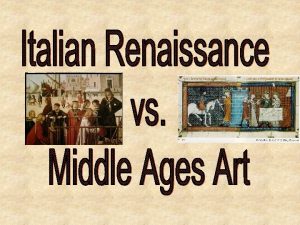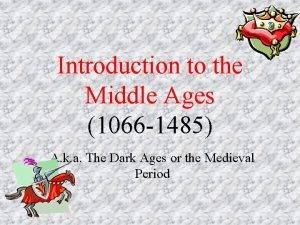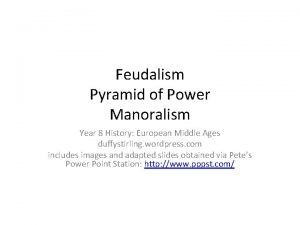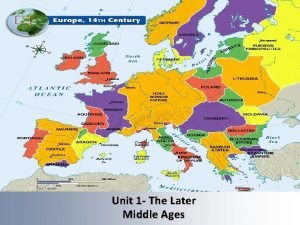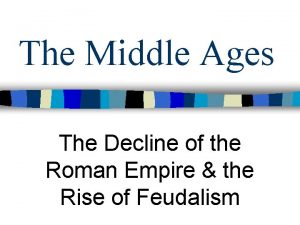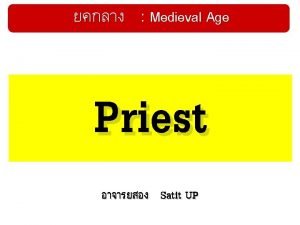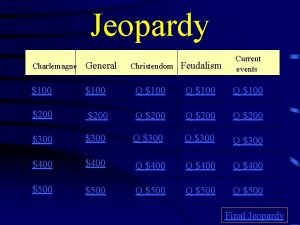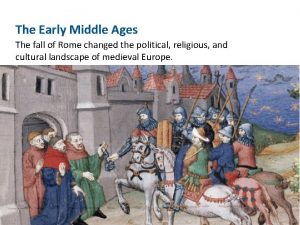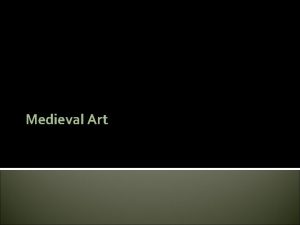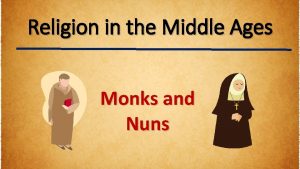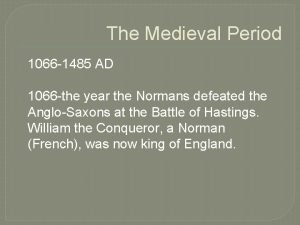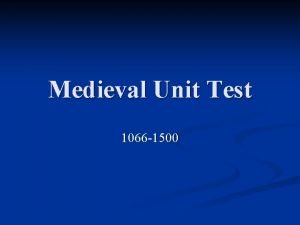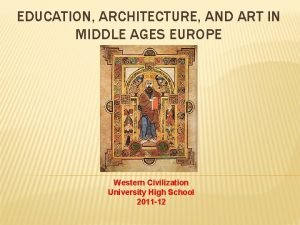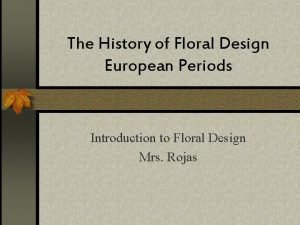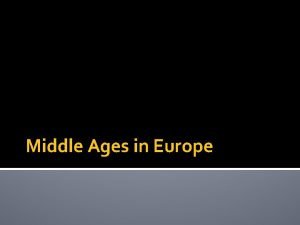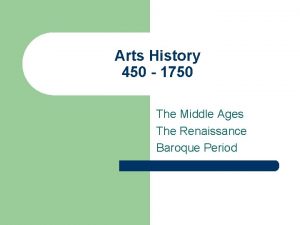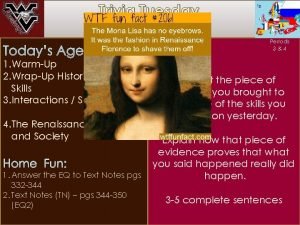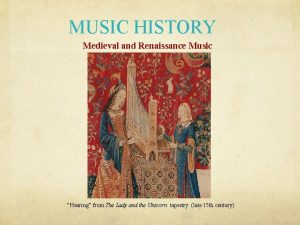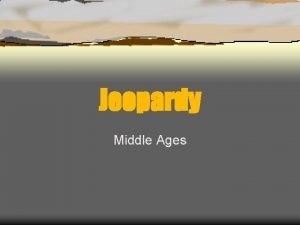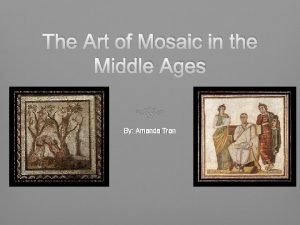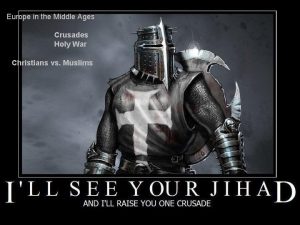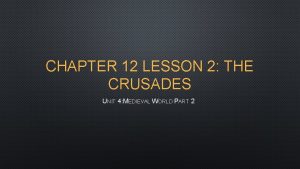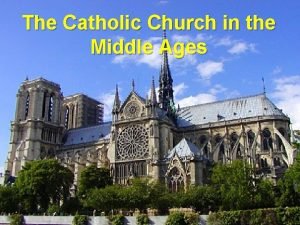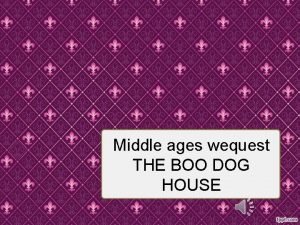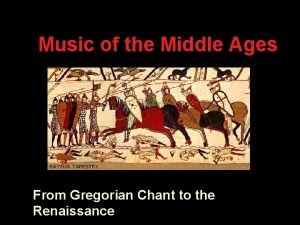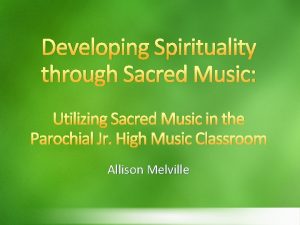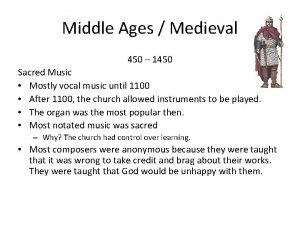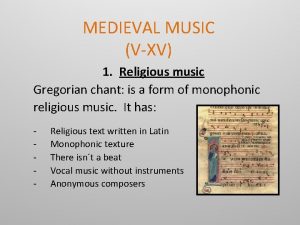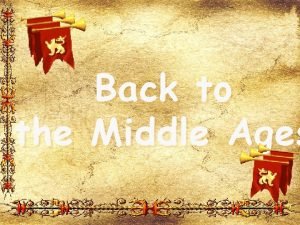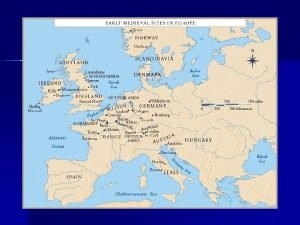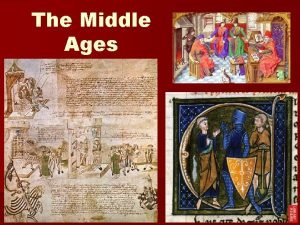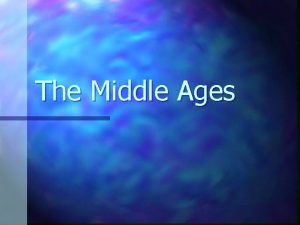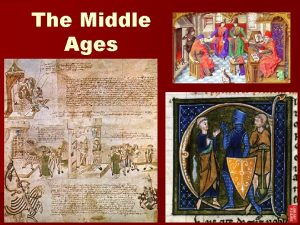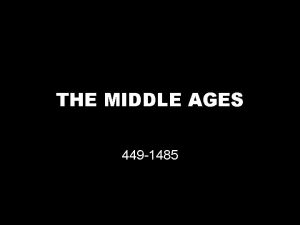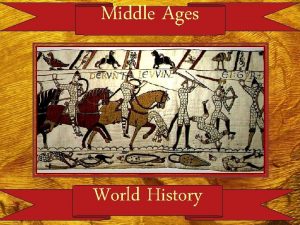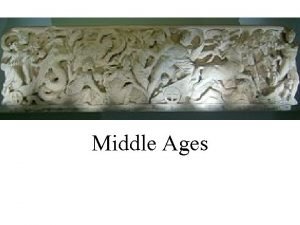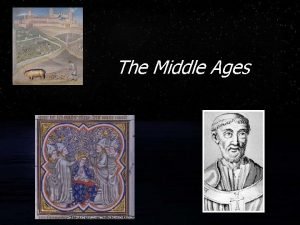Sacred Music of the Middle Ages From Gregorian










































- Slides: 42

Sacred Music of the Middle Ages From Gregorian Chant to Ars Nova

Learning Outcomes: • • Understand the human condition in the middle ages Understand the challenges that music presented and how those challenges were solved Understand the characteristics of Medieval music and the descriptive terms Know the influential composers of each musical era within the Medieval period.

On the Misery of the Human Condition, c. 1200 inspiring words from Pope Innocent III . . . man was formed of dust, slime, and ashes: what is even more vile, of the filthiest seed. He was conceived from the itch of the flesh, in the heat of passion and the stench of lust, and worse yet, with the stain of sin. He was born to toil, dread, and trouble; and more wretched still, was born only to die. He commits depraved acts by which he offends God, his neighbor, and himself; shameful acts by which he defiles his name, his person, and his conscience; and vain acts by which he ignores all things important, useful, and necessary. He will become fuel for those fires which are forever hot and burn forever bright; food for the worm which forever nibbles and digests; a mass of rottenness which will forever stink and reek.

Two era’s of music developed during the Medieval Period Ars Antiqua - 1100 -1300 & Ars Nova - 1300 - 1450




Ars Antiqua began in Paris at the Cathedral de Notre Dame


Representative Ars Antiqua Composers Leonin (1163 -1190) • Perotin (early 13 th century) • Hildegard von Bingen (1098 -1179) • Anonymous (? ) •

Monophony Single line of song, could be sung by many voices but the pitch is unison. Mono- meaning one Type of music composed during the Ars Antiqua

What is Ars Antiqua? • • • Literally means “old art” Stemmed directly from Gregorian Chant This style of music can be characterized as adding hollow sounding harmonies(perfect 4 ths & 5 ths) to existing chants. This type of music is called organum. Originally, one voice would be added above the existing chant. The chant would be sung very slowly - it was called the cantus firmus.

Early Polyphony means more than one pitch played at the same time - what we typically call harmony. • The first type of polyphony was called parallel organum. Here the cantus firmus and the higher harmony mirrored each other. • Eventually composers like Leonin and his student Perotin began adding a third and fourth part above the cantus firmus, and moved away from the eerie sounding parallel organum. •

Parallel Organum

Meanwhile, in Germany… Hildegard von Bingen, who herself was a nun with reported mystical powers, began composing music different from the Notre Dame school. • Von Bingen wrote music that sounded wildly different than plainchant, which some attributed to her lack of musical training. Her melodies, even today, seem contemporary. •


What kind of music was happening outside of the church? • Secular music, or popular music, has always existed throughout history, but very little during the Middle Ages.

Troubadours • Troubadours were French musicians who traveled across Europe during the 12 th and 13 th centuries. • They sang mostly love songs. • They accompanied their love songs with instruments, unlike the church.


Adam de la Halle (1237 -1286) • The most famous troubadour ever • Wrote the first ever musical theater piece Le Jeu de Robin et Marion • Inventor of the Motet • Motet - a piece of music where two or more different verses are fit together simultaneously, without regard to harmony

Medieval Instruments • Instruments in early secular music were used to accompany songs. • Musicians usually improvised the simple accompaniments. • While the accompaniments were melodically simple, they were rhythmically lively.

Harp

Krumhorn

Lute

Muted Cornett

Psaltery

Sacbut

Serpent

Shawm

Hurdy-Gurdy

Drum or Tambor

Recorder

Viol

Ars Nova • • • 14 th & 15 th century France The invention of modern notation The creation of the Ordinary of the Catholic Mass The popularity of the motet The introductory use of phrasing and cadences An awakening to relationship between text and music

Representative Ars Nova Composers • • • Guillaume de Machaut (1300 -1377) Francesco Landini (1325 -1397) Guillaume Dufay Josquin Desprez Anonymous (? )


Guillaume de Machaut A poet & a musician • Created the first Ordinary for the Catholic Mass • Created many of the musical forms of today (rondos and ballades) • Began writing patterns and introduction of cadences. •

GUIDO DE AREZZO Father of Modern Notation Guidonian Hand- Solfeg 4 line staff Stems on nuemes

Examples of Ars Nova Music from this period was the first to add stems to the nuemes, thereby creating our modern system of notation. (Guido)


This piece is called “Sumer is icumen in” and is the oldest surviving round.

Conclusions Most Medieval composers wrote mainly for the church and remained anonymous. • These early composers did not take the art of composition seriously. It was more a necessary function, or duty. • Most secular musicians had day jobs. Full time musicians were poor. • While music itself was held in high regard, those who made it were not. This is very different today. •
 Gregorian chant middle ages
Gregorian chant middle ages Sacred music in the middle ages
Sacred music in the middle ages Sacred gregorian chant
Sacred gregorian chant Dark ages vs middle ages
Dark ages vs middle ages Dark ages def
Dark ages def Music music music
Music music music Gregorian chant timbre
Gregorian chant timbre Listen and chant
Listen and chant Gregorian calendar 2019
Gregorian calendar 2019 Gregorian reforms
Gregorian reforms Singing mode
Singing mode Living conditions in the middle ages
Living conditions in the middle ages Dark ages vs renaissance
Dark ages vs renaissance Naissance renaissance
Naissance renaissance The middle ages 1066 to 1485 unit test closed book
The middle ages 1066 to 1485 unit test closed book The feudal pyramid of power
The feudal pyramid of power European middle ages map
European middle ages map Middle ages
Middle ages Roman catholic church hierarchy pyramid
Roman catholic church hierarchy pyramid Current events jeopardy
Current events jeopardy Early middle ages
Early middle ages Medieval art characteristics
Medieval art characteristics Monks and nuns in the middle ages
Monks and nuns in the middle ages The middle ages 1066-1485 unit test
The middle ages 1066-1485 unit test Middle ages unit test answers
Middle ages unit test answers Cathedral art
Cathedral art Middle ages def
Middle ages def European floral design history
European floral design history Feudalism def
Feudalism def High middle ages
High middle ages Musical representation of specific poetic images
Musical representation of specific poetic images European middle ages chapter 13
European middle ages chapter 13 Middle ages renaissance
Middle ages renaissance Church modes
Church modes Middle ages jeopardy
Middle ages jeopardy Middle ages mosaics
Middle ages mosaics Middle ages
Middle ages The middle ages 1066 to 1485 unit introduction
The middle ages 1066 to 1485 unit introduction Byzantine floral history
Byzantine floral history Lesson 2 the crusades
Lesson 2 the crusades What does the word rebirth mean
What does the word rebirth mean Middle ages
Middle ages During the middle ages noblewomen had
During the middle ages noblewomen had
